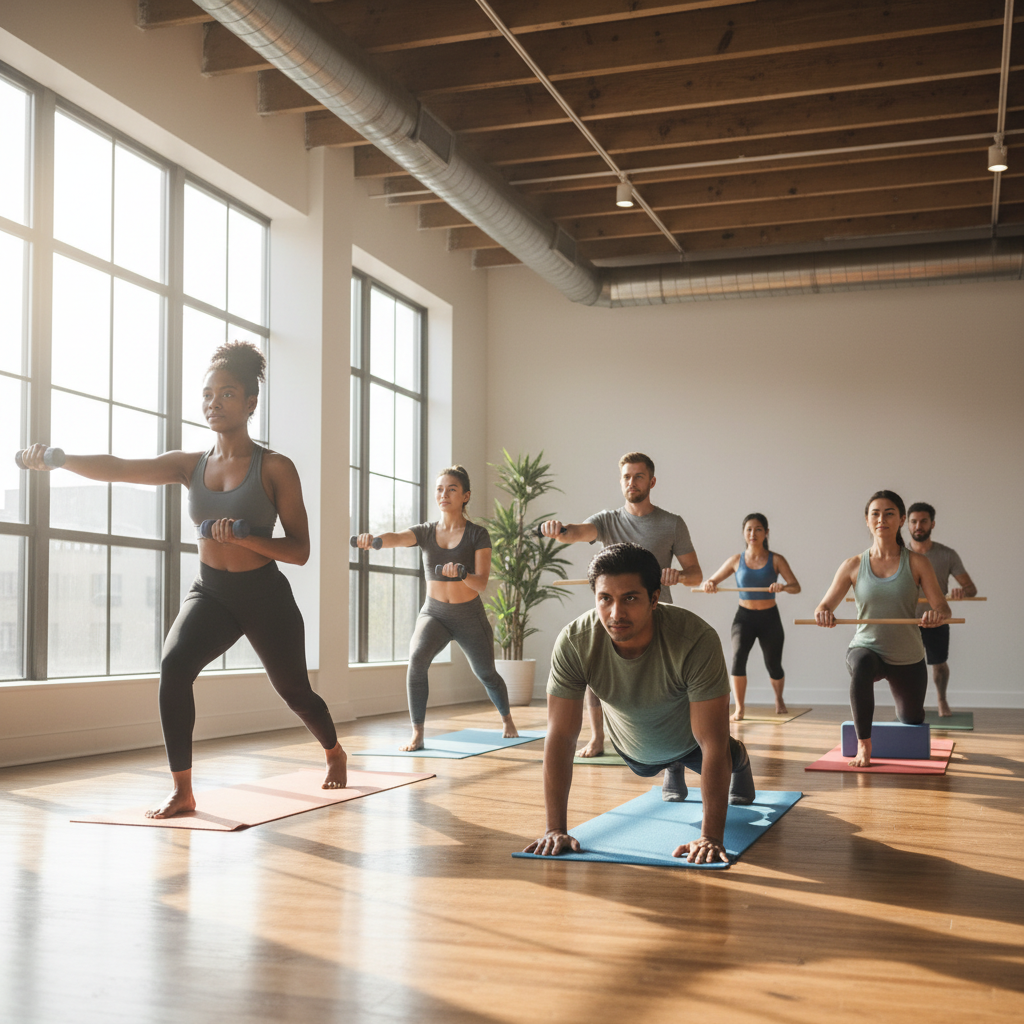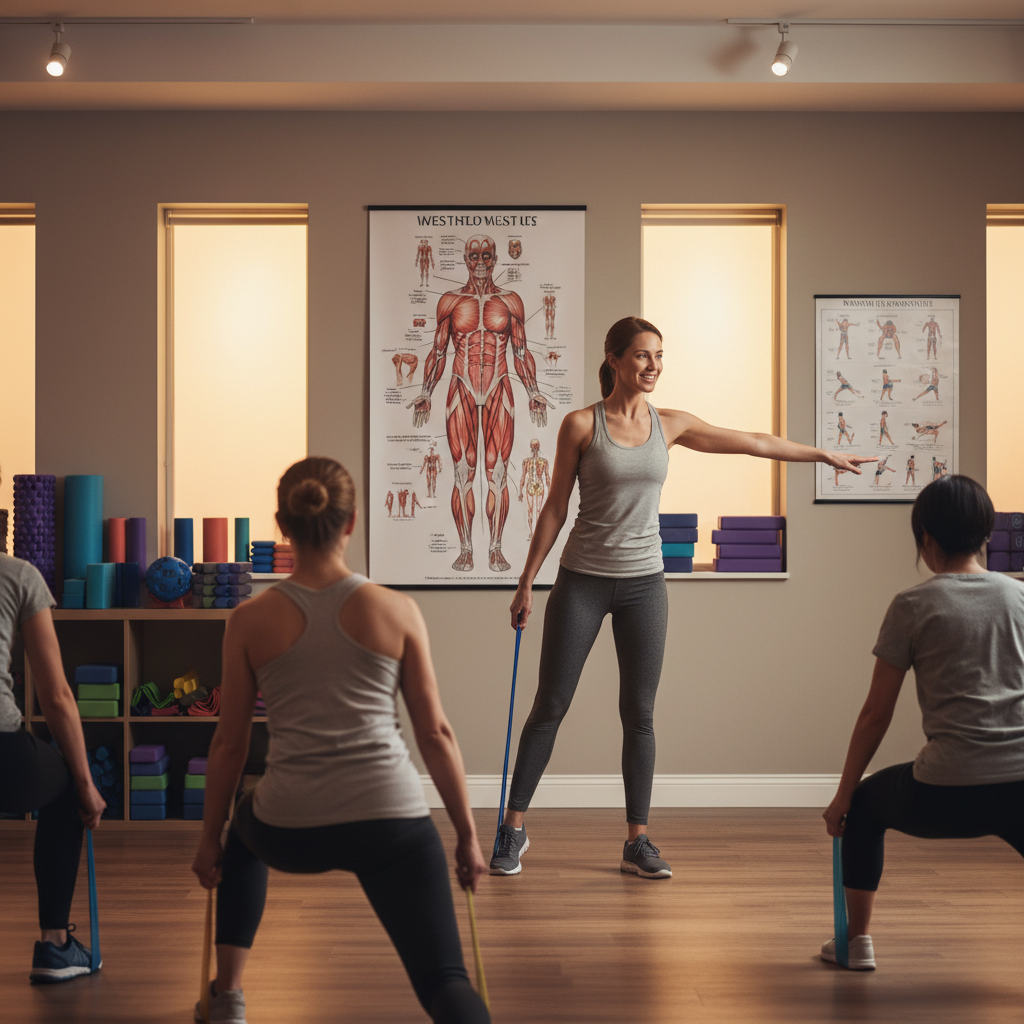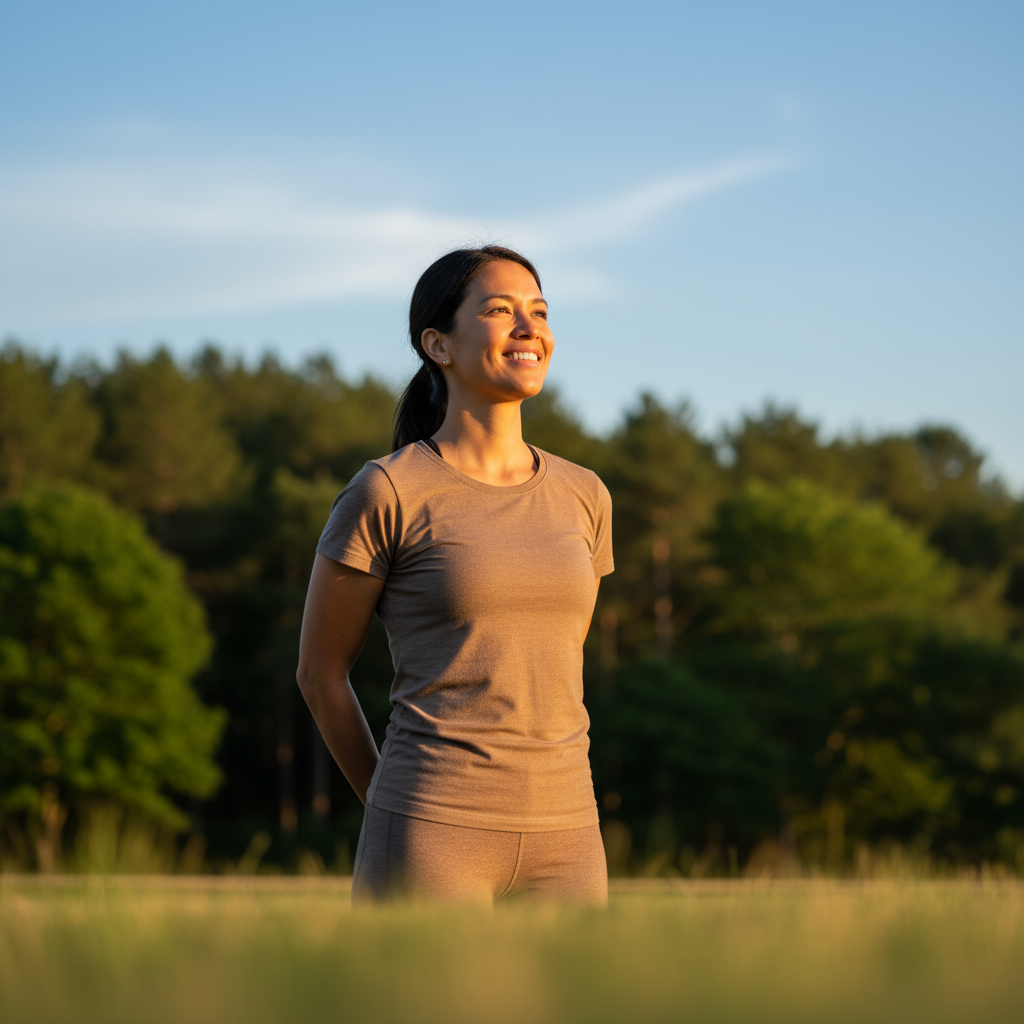
Table of Contents
Introduction
Here’s something we all do but rarely think about: our posture. Yet it affects everything—how we feel, how confident we look, even how much energy we have at the end of the day. Ever catch yourself slouching over your laptop and suddenly realize your neck feels like it’s made of concrete? Yeah, that’s your posture sending you a message.
The thing is, posture correction exercises aren’t just for people with back problems or gym enthusiasts. They’re for anyone who wants to feel better in their own body. And trust me, once you start working on your posture, you’ll wonder why you waited so long. We’re talking about realigning your body, ditching that constant tension, and actually preventing those annoying aches that seem to come out of nowhere. With so many of us glued to screens all day (guilty as charged), poor posture has become the norm rather than the exception. But here’s the good news—you can absolutely turn this around. The secret? Focusing on core stability, flexibility, and building strength in all the right places. If you’re new to fitness altogether, check out our guide on how to start a fitness routine to build that foundation of consistency.
Now, let’s talk about the dynamic duo of posture correction: flexibility and strength. Think of flexibility work as giving your tight, cranky muscles a much-needed vacation. Those chest-opening stretches? They’re basically the antidote to hunching over your desk. And when you add targeted stretches for your neck, shoulders, and hip flexors, you’re addressing the main culprits behind postural discomfort. Want to dive deeper into flexibility? Our how to increase flexibility fast guide has you covered. But flexibility alone won’t cut it—you need strength too. Your upper back, core, and glutes are like the support crew for good posture. When they’re strong, maintaining proper alignment becomes way easier. Speaking of core strength, how to improve core stability breaks down exactly how to build that spine-supporting power.
Here’s something you might not expect: what you eat actually plays a role in your posture journey. (I know, I know—everything connects to nutrition somehow!) Your muscles need proper fuel to recover and stay strong, which directly impacts how well you can maintain good posture. That’s where smart nutrition choices come in. Our friends over at Nutrients Pathway have excellent insights on post workout recovery foods and whole grain benefits that support your fitness goals. Plus, there’s this beautiful cycle where better posture leads to more energy, which makes you want to move more, which improves your mental health. It’s all connected—and you can read more about this in our guide to the benefits of regular physical activity.
What You’ll Learn in This Guide
Ready to transform how you carry yourself? This guide breaks down everything you need to know about fixing your posture through targeted exercises. We’re covering the stretches, the strengthening moves, and the awareness techniques that actually work. Here’s your roadmap:
- Stretching Exercises for Posture: Learn targeted stretches such as chest openers, neck and shoulder stretches, and hip flexor releases that relieve tightness and improve your body’s alignment.
- Strengthening Key Muscle Groups: Understand the role of your core, upper back, and glute muscles in supporting proper posture and follow exercise recommendations to build lasting strength and stability.
- Postural Awareness and Alignment Techniques: Discover exercises like wall angels and chin tucks that increase your body awareness and help maintain correct posture throughout daily activities.
- Maintenance and Lifestyle Tips: Gain insight into daily habits, ergonomic adjustments, and motivation techniques to sustain good posture and prevent relapse over time.
Throughout this article, you’ll get clear, step-by-step instructions for exercises that actually make a difference. No confusing jargon or impossible-to-follow routines—just practical moves you can start doing today. We’ll also tackle the mistakes people commonly make (so you can avoid them) and help you figure out when it might be time to bring in a professional for extra support.
Whether you’re dealing with discomfort right now, want to perform better in sports, or simply want to walk into a room with more confidence, these posture correction exercises can be game-changers. The best part? You don’t need fancy equipment or hours of free time. With some consistency and a bit of mindful attention to how you hold yourself, you’ll start noticing changes in how your spine feels, how much energy you have, and how balanced your body becomes. Ready to get started? Let’s jump into the specific exercises and strategies that will help you stand taller, feel stronger, and move with more confidence every single day.

Let’s be honest—most of us have terrible posture. You’re probably slouching right now reading this (I won’t judge). The good news? You can absolutely fix it, and the right exercises make all the difference. We’re going to walk through exactly how poor posture affects your daily life and what you can do about it. By the time we’re done here, you’ll have a clear action plan for better body alignment and way less discomfort. Trust me, your back will thank you.
Understanding Posture and Its Impact on Health
Think of posture as how you carry yourself—whether you’re standing in line at the grocery store, hunched over your laptop, or sprawled on the couch. Here’s what’s happening to most of us: we’re developing some pretty common (and pretty problematic) habits. Slouching, that forward head thing we do when staring at screens, rounded shoulders that make us look like question marks. Sound familiar?
These aren’t just cosmetic issues. Poor posture can seriously mess with your health—we’re talking back pain, neck pain, feeling like you can’t take a deep breath, and that bone-deep fatigue that hits you by 3 PM. The thing is, corrective exercises can actually turn this around and prevent long-term damage to your muscles and joints. Your core plays a huge role here, which is why our guide on how to improve core stability pairs perfectly with posture work—strong core muscles are like having a built-in support system for proper alignment.
But here’s what really gets me: poor posture doesn’t just hurt—it changes how you move through the world. Your balance gets wonky, you’re more likely to trip or fall (especially as you get older), and honestly? It can make you feel less confident. Ever notice how you feel different when you’re standing tall versus when you’re all hunched over? That’s not in your head. When you realize how much posture affects everything from your physical health to how you feel about yourself, it becomes worth the effort to fix it. And speaking of effort, the principles in our functional fitness workouts guide can help you build the balance and mobility that make good posture stick.
Common Posture Problems and Their Effects
Let’s break down the usual suspects when it comes to posture problems:
- Slouching and Rounded Shoulders: This is the classic “computer posture.” Your chest gets tight, your upper back gets weak, and suddenly breathing feels harder. It’s like your body is slowly collapsing in on itself.
- Forward Head Posture: Thanks, smartphones and laptops. When your head juts forward like a turtle, your neck has to work overtime to hold it up. The result? Tension headaches and that achy feeling between your shoulder blades that never seems to go away.
- Pelvic Tilts and Lower Back Strain: Spend too much time sitting, and your hip flexors get tight while your glutes basically go to sleep. Your pelvis tilts out of whack, and your lower back pays the price with stiffness and pain.
- Muscle Imbalances and Weakness: Here’s the domino effect: some muscles get too tight, others get too weak, and your whole body starts moving like a rusty machine. It’s inefficient and uncomfortable.
The key is figuring out which of these sound like you. Once you know your trouble spots, you can target them specifically instead of just hoping generic exercises will help. Catch these issues early, and you can avoid the chronic pain that comes when they’ve been ignored for years.
Look, developing better posture habits isn’t going to happen overnight. It takes daily awareness and commitment to the right exercises. But here’s what’s encouraging—the exercises actually work when you do them consistently. So let’s get into the specific moves that can transform how you carry yourself.
Top Exercises for Posture Correction
Here’s how this works: you need three types of exercises to fix your posture. First, you stretch the muscles that have gotten too tight (hello, chest and hip flexors). Second, you strengthen the muscles that have gotten lazy (I’m looking at you, upper back and glutes). Third, you train your body to actually remember what good posture feels like. It’s like teaching yourself a new way to stand and move.
If you’re wondering how to stay consistent with all this, our how to stay motivated to exercise guide has some solid strategies. Because let’s face it—consistency is everything when it comes to posture correction. You can’t just do these exercises once a week and expect miracles.
The magic happens when you focus on your core, back, hips, and shoulders all working together. Strengthen your upper back and glutes, and suddenly your shoulders sit where they should and your pelvis finds its happy place. Stretch your chest and hip flexors, and you’ll feel that tight, pulled-forward feeling start to ease up. Add some awareness exercises, and your body starts to automatically choose better alignment. It’s pretty amazing how connected everything is.
Key Aspects of Posture Correction Exercises
Here’s your game plan for tackling posture correction:
- Stretching Tight Muscle Groups: Those chest stretches that feel so good when you’ve been hunched over all day? Do more of them. Same goes for neck and shoulder stretches that melt away tension, and hip flexor stretches that undo the damage from too much sitting. The goal is to counteract all that tightness your daily habits create.
- Strengthening Core and Back: Your core is like your body’s natural weight belt—strengthen it, and your spine gets the support it needs to maintain its natural curves. Upper back exercises like rows and scapular squeezes pull your shoulders back where they belong. And don’t sleep on glute strengthening—strong glutes keep your pelvis stable and happy.
- Postural Awareness and Alignment Training: This is where things get interesting. Wall angels teach your shoulders how to move properly, chin tucks fix that forward head situation, and balance exercises help your whole body work as a team. These moves train your nervous system to choose good posture automatically.
- Integrating Functional Movements: The real test? Can you maintain good posture while doing everyday stuff—carrying groceries, playing with kids, sitting at your desk? Functional movements bridge the gap between exercise time and real life, so your posture improvements actually stick.
When you combine all these elements consistently, something pretty cool happens. Your alignment improves, pain decreases, and you start moving better overall. But exercises are just part of the equation—you also need practical strategies for maintaining good posture throughout your day.

Here’s the thing about good posture—it’s not just about looking confident (though that’s a nice bonus). Your posture affects everything. How you breathe. How much energy you have. Whether your back screams at you by 3 PM. Poor posture? It’s like carrying a backpack full of problems you didn’t even know you signed up for. But here’s what we’ve discovered together: the right exercises can completely turn things around. We’re talking about stretching those tight chest muscles that keep pulling you forward, strengthening your core and upper back so they can actually do their job, and training your body to remember what “standing tall” feels like. Those wall angels and chin tucks we covered? They’re basically teaching your nervous system to be your posture’s best friend.
Now, let’s be real about something. Consistency beats perfection every single time. You can’t just do these exercises once and expect your posture to magically fix itself—that’s not how bodies work. But commit to showing up regularly, focus on your specific trouble spots, and build those daily habits we talked about? That’s when the magic happens. Less pain. Better movement. And yes, that confidence boost when you catch yourself standing taller in the mirror. This isn’t about quick fixes (because those don’t exist). It’s about creating real, lasting changes that make your body work with you instead of against you. Think of it as an investment—one that pays dividends in comfort and functionality for years to come.
Ready to take this further? Let’s talk next steps. If you’re just getting started with fitness, our guide on fitness challenges for beginners will help you build that consistency muscle (it’s harder to develop than your abs, trust me). Staying motivated can be tough—we get it. That’s why our strategies in how to stay motivated to exercise are game-changers for keeping your routine sustainable and actually enjoyable. Strength training is non-negotiable for posture support, and our best strength training exercises guide breaks down exactly which moves will give you the biggest bang for your buck. Need to work on flexibility? Our guide on how to increase flexibility fast has techniques that actually work (no endless stretching sessions required). And since your core is basically your body’s natural support system, check out how to improve core stability for exercises that build real, functional strength.
Here’s something worth considering: when you combine these targeted posture exercises with regular physical activity, you’re not just fixing your alignment—you’re upgrading your entire health game. Better cardiovascular health, more muscle endurance, improved mood, higher energy levels. The whole package. If you want to understand just how powerful regular movement can be, the benefits of regular physical activity will open your eyes to possibilities you might not have considered. This holistic approach doesn’t just help you stand taller—it transforms how you feel in your own skin.
Look, posture correction isn’t a sprint. It’s more like training for a marathon, except the finish line keeps moving in the best possible way. You’ll need patience. You’ll need to show up consistently, even when you don’t feel like it. But you now have the knowledge and tools to make real changes. Every wall angel, every strengthening exercise, every moment you catch yourself slouching and adjust—it all adds up. Start where you are today. Celebrate the small victories (like remembering to engage your core while walking). Your future self—the one standing tall, moving with ease, and feeling genuinely comfortable in their body—will thank you for beginning this journey right now.
Frequently Asked Questions
-
How long does it take to see improvement in posture?
- Improvement varies by individual, but noticeable changes often appear within a few weeks of consistent exercise and mindful practice.
-
Can I do posture exercises at home without equipment?
- Yes, many effective posture exercises require no special equipment and can be performed safely at home with proper form.
-
Are posture exercises safe for everyone?
- Most people can safely perform posture exercises, though consulting a healthcare professional is recommended if you have existing health concerns.
-
How often should I do posture correction exercises?
- Regular practice, ideally daily or at least several times a week, provides the best results for lasting posture correction.
-
What are the common mistakes to avoid during posture exercises?
- Avoid rushing through exercises, poor form, and inconsistency. Focus on quality movements and steady progress for optimal benefits.
